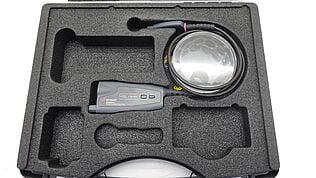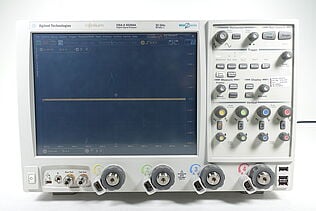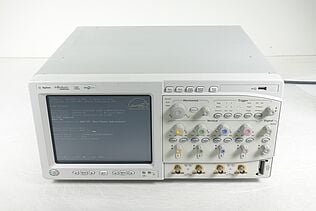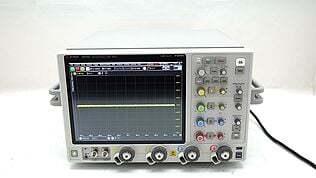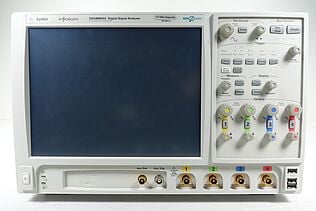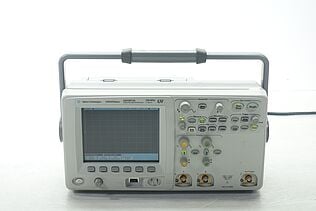- Introduction
- What Is Dynamic Range?
- Why Dynamic Range Matters
- Accurate Measurements
- Signal Integrity
- Real-world Scenarios
- Measuring Dynamic Range
- Factors Affecting Dynamic Range
- ADC Bits
- Noise Floor
- Amplifier Linearity
- Bandwidth
- Choosing an Oscilloscope Based on Dynamic Range
- Understand Your Requirements
- Check the Specs
- Test the Device
- Key Factors Affecting Dynamic Range and Their Impact
- Conclusion
- Whenever You’re Ready, Here Are 5 Ways We Can Help You
Did you know that the dynamic range of an oscilloscope can make or break the quality of your signal measurement?
Understanding the concept of dynamic range is crucial for anyone working with oscilloscopes, as it directly affects the accuracy and quality of the readings.
This article aims to provide a comprehensive look at what dynamic range means in the context of oscilloscopes and why it matters to you as an electrical engineer or related professional.
What Is Dynamic Range?
Dynamic range is the ratio, usually expressed in decibels (dB), between the smallest and largest signal amplitudes that an oscilloscope can accurately measure simultaneously.
It tells you the scope of the signal levels that your device can capture without distortion or loss of detail.
Dynamic Range vs Vertical Resolution
People often confuse dynamic range with vertical resolution, but they're not the same thing.
- Dynamic range: Concerns the smallest and largest signals captured simultaneously
- Vertical resolution: Relates to the smallest change in signal that can be detected by the oscilloscope
| Key Takeaway |
|---|
| Dynamic range is a critical factor that dictates the accuracy and versatility of an oscilloscope, affecting everything from signal integrity to real-world applicability. Understanding how factors like ADC bit-depth, noise floor, and amplifier linearity influence dynamic range enables you to make more informed decisions when choosing an oscilloscope or interpreting measurements. |
Discover Keysight’s Oscilloscope Range: Advanced Features at Your Fingertips
Why Dynamic Range Matters
Dynamic range isn't just a technical specification you can overlook; it's a crucial factor that impacts every measurement you make with an oscilloscope.
From capturing accurate waveforms to maintaining signal integrity, the dynamic range has a say in it all. Let's delve deeper into why this parameter is so vital.
Accurate Measurements
In an ideal world, you'd want to capture the entire spectrum of your signal, from the smallest details to the towering peaks. A higher dynamic range allows you to do just that.
With a wide dynamic range, your oscilloscope can capture both the low-level and high-level signals accurately, offering a fuller picture of the electrical phenomena you're investigating.
This, in turn, allows you to make more precise calculations and predictions based on the captured data.
Signal Integrity
When you're working with a low dynamic range, you're essentially limiting the scope of your investigation.
High-level signals might get clipped, while the low-level signals could get lost in the noise. This distortion can severely compromise the integrity of the measurements.
A sufficient dynamic range ensures that the signal retains its original form, giving you reliable data to work with.
Real-world Scenarios
Let's face it, electrical signals in real-world applications aren't always conveniently within a narrow range of amplitudes. You might be dealing with microvolts in one scenario and several volts in another.
A good dynamic range allows your oscilloscope the versatility to handle a wide range of real-world signals, making it a more valuable tool in your measurement arsenal.

Measuring Dynamic Range
Dynamic range is often calculated using the formula:
Dynamic Range (dB)=20×log10 (Minimum Amplitude / Maximum Amplitude)
Lab Measurement vs Spec Sheet
Always cross-check the dynamic range specified on the oscilloscope’s spec sheet with actual lab measurements. Manufacturers often state idealized numbers that may not hold up in real-world applications.
Factors Affecting Dynamic Range
The dynamic range of an oscilloscope isn't a standalone feature; various internal and external factors influence it.
Understanding these elements can help you make more informed decisions when selecting an oscilloscope or interpreting measurements.
Below, we delve into some of the key factors that impact dynamic range.
ADC Bits
The bit-depth of the Analog-to-Digital Converter (ADC) is one of the primary factors affecting dynamic range.
A higher bit-depth means that the ADC can represent the incoming signal with greater granularity, enhancing the capability to capture both low-level and high-level signals accurately.
- 8-bit ADC: Common in many general-purpose oscilloscopes, offering a dynamic range of around 42 dB.
- 12-bit or higher ADC: Found in high-precision oscilloscopes, can offer dynamic ranges exceeding 66 dB.
Noise Floor
The noise floor refers to the level of background electrical noise present in the oscilloscope's circuitry.
A lower noise floor allows the device to more accurately capture low-level signals, thereby improving the dynamic range.
- Reduced noise floor: Helps in more accurately capturing low-level signals.
- Increased noise floor: Masks low-level signals, reducing effective dynamic range.
Amplifier Linearity
Amplifiers within the oscilloscope can also affect dynamic range. If an amplifier operates in a non-linear fashion, it can introduce distortion into the captured signal. This distortion can effectively reduce the usable dynamic range.
- Linear amplifiers: Maintain signal integrity, contribute to a higher dynamic range.
- Non-linear amplifiers: Introduce signal distortion, effectively reducing dynamic range.
Bandwidth
While having a high-bandwidth oscilloscope might seem advantageous for capturing high-frequency signals, it's important to remember that higher bandwidth can introduce more noise.
The noise gets added across the entire bandwidth, affecting the noise floor. This, in turn, reduces the effective dynamic range.
- Limited bandwidth: May offer a lower noise floor, potentially increasing effective dynamic range for specific low-frequency applications.
- High bandwidth: Useful for capturing high-frequency details, but can introduce additional noise, which may reduce dynamic range.
By being aware of these factors, you can make more informed decisions when selecting an oscilloscope or when interpreting your measurement results.
Choosing an Oscilloscope Based on Dynamic Range
Selecting the right oscilloscope is a critical decision that can significantly impact the quality of your measurements.
The dynamic range should be one of the key specifications you consider.
Below, we go into detail about what to look for when choosing an oscilloscope based on dynamic range.
Understand Your Requirements
Before even browsing through oscilloscope models, understand the kinds of signals you'll likely encounter in your work. This can help you define a baseline for the dynamic range you need.
- High-voltage applications: If you're working with high voltages, you'll need an oscilloscope with a high upper limit for its dynamic range.
- Low-level signal investigations: For sensitive measurements, consider an oscilloscope with a low noise floor and high bit-depth ADC.
Check the Specs
Manufacturers provide spec sheets that include dynamic range information, among other specifications. However, remember that the figures on these sheets are often idealized and obtained under controlled conditions.
- Cross-reference with reviews: Look for third-party reviews or research papers that have independently verified the dynamic range.
- Understand the units: Ensure that you're comparing like-for-like; dynamic range is usually specified in decibels (dB), but always confirm.
Test the Device
Before making a purchase, if possible, get some hands-on time with the oscilloscope. This allows you to verify if the device meets your dynamic range requirements in a real-world setting.
Here are some specific steps to take:
- Run signal tests: Inject known signals into the oscilloscope and measure how well it captures both high and low levels.
- Check for clipping and noise: Observe if high-level signals are getting clipped or if low-level signals are lost in the noise.
- Evaluate ADC bit-depth: If the oscilloscope has variable bit-depth settings, test these to see how they impact the dynamic range.
- Measure with different bandwidths: If the oscilloscope has adjustable bandwidth, observe how the dynamic range changes when you alter this parameter.
- Test amplifier linearity: Use signals of varying amplitudes to evaluate whether the oscilloscope's internal amplifiers introduce any non-linearities.
By following these guidelines, you increase your chances of selecting an oscilloscope that is well-suited for your specific dynamic range needs.
Find Keysight Oscilloscopes On Sale
Select up to 3 instruments to compare
Enable Notifications
In order to use this feature, you need to enable notifications.
Manage notification preferences
Key Factors Affecting Dynamic Range and Their Impact
| Factor | Description | Impact on Dynamic Range |
| ADC Bit-depth | Number of bits in the Analog-to-Digital Converter | Higher bit-depth leads to greater dynamic range |
| Noise Floor | Level of background electrical noise | Lower noise floor results in better dynamic range |
| Amplifier Linearity | Linearity of internal amplifiers | Non-linear amplifiers can reduce effective dynamic range |
| Bandwidth | Range of frequencies the oscilloscope can handle | Higher bandwidth may introduce more noise, affecting dynamic range |
Conclusion
Understanding the concept of dynamic range is crucial for anyone working with oscilloscopes. The dynamic range impacts the quality and accuracy of the measurements you can obtain, affecting everything from signal integrity to the scope's versatility in real-world scenarios.
Key factors such as ADC bit-depth, noise floor, amplifier linearity, and bandwidth play vital roles in determining an oscilloscope's dynamic range. Knowing these intricacies helps you make more informed decisions, whether you're interpreting measurements or in the market for a new oscilloscope.
If you're looking to invest in high-quality testing equipment that meets your dynamic range requirements, consider visiting Keysight Used Equipment Store.
We offer a premium selection of used oscilloscopes, spectrum analyzers, waveform generators, and multimeters. Each piece of equipment is rigorously tested and certified, ensuring that you get reliable, high-performance gear without breaking the bank.

Whenever You’re Ready, Here Are 5 Ways We Can Help You
- Browse our Premium Used Oscilloscopes.
- Call tech support US: +1 800 829-4444
Press #, then 2. Hours: 7 am – 5 pm MT, Mon– Fri - Talk to our sales support team by clicking the icon (bottom right corner) on every offer page
- Create an account to get price alerts and access to exclusive waitlists.
- Talk to your account manager about your specific needs.










